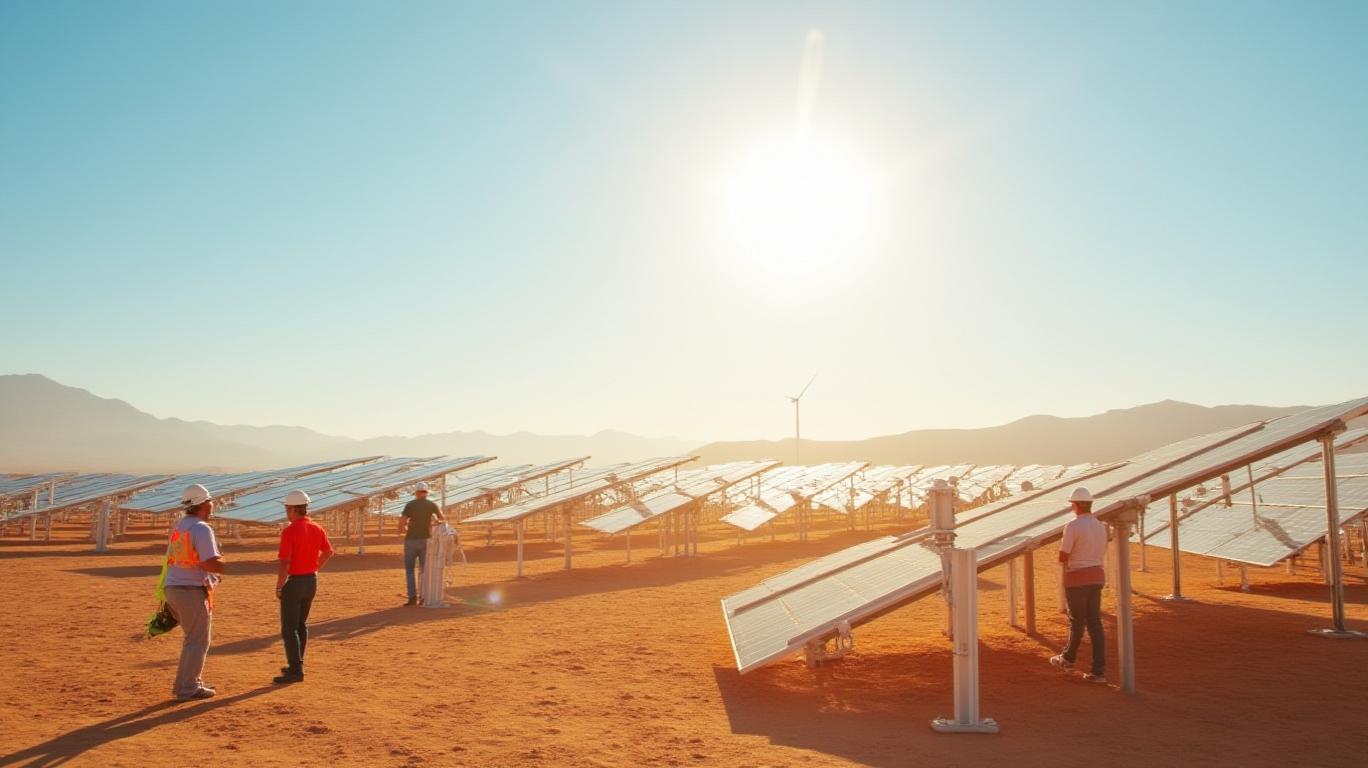Nextracker’s Pivot to a Solar Platform Giant: Why This Transition Could Power Long-Term Gains
The renewable energy revolution is no longer theoretical—it’s here, and
(NASDAQ: NTR) is emerging as its most compelling beneficiary. With its Q4 2024 earnings report, the acquisition of Bentek, and its FY2026 guidance, Nextracker has signaled a bold strategic shift: from a niche solar tracker manufacturer to a full-stack solar platform company. This transition isn’t just about incremental growth—it’s a calculated move to dominate the $1.2 trillion global solar market by 2030, leveraging vertical integration, tax incentives, and a supply chain built for scale.The Earnings Beat: A Foundation of Execution
Nextracker’s Q4 2024 results were a masterclass in execution. Revenue surged 42% YoY to $737 million, while adjusted EBITDA jumped 120% to $160 million, excluding IRA tax credits. But the real story lies in the $4 billion backlog—a threefold increase in two years—which reflects a pipeline of projects secured in a fiercely competitive market. This isn’t just growth; it’s proof of Nextracker’s ability to lock in long-term demand.

The company’s 100-GW shipment milestone—the first for any U.S. solar firm—also underscores its leadership. CEO Dan Shugar’s focus on operational rigor has translated into a $766 million cash balance, no debt, and a 50-GW global supply capacity, 30% of which is dedicated to the U.S. to comply with IRA incentives. These metrics aren’t just impressive; they’re the lifeblood of a company positioning itself to capitalize on the $360 billion in IRA tax credits available through 2032.
The Bentek Acquisition: Vertical Integration at Scale
Nextracker’s $78 million acquisition of Bentek in late 2024 was a strategic masterstroke. The deal isn’t about cost-cutting—it’s about owning the future of solar power. By integrating Bentek’s electrical balance-of-systems (eBOS) products (trunk buses, combiner boxes, etc.), Nextracker transforms itself into a one-stop shop for utility-scale solar projects.
This vertical integration matters because it reduces project complexity for customers and cuts costs for Nextracker. As CFO Chuck Boynton noted, the move allows Nextracker to “reduce installed system costs by 10-15%” by optimizing mechanical and electrical subsystems. With Bentek’s U.S. manufacturing assets, Nextracker also strengthens its compliance with IRA’s domestic content rules, ensuring eligibility for the 45X tax credit—a critical advantage in a market where subsidies drive adoption.
The contingent earnout structure—tying future payments to performance—adds prudence. Nextracker isn’t overpaying; it’s incentivizing Bentek’s team to deliver on growth targets.
FY2026 Guidance: Ambitious, But Backed by Momentum
Nextracker’s FY2026 guidance is audacious yet achievable. Revenue is projected to hit $3.2–3.4 billion, a 32% increase from FY2024’s $2.5 billion. Adjusted EBITDA is expected to nearly double to $700–775 million, while adjusted EPS is set to rise to $3.65–$4.03, surpassing analyst estimates. These numbers aren’t plucked from thin air:
- Backlog Growth: Sequential increases to over $4.5 billion by Q4 2025, fueled by demand for advanced trackers (NX Horizon Hail Pro) and Bentek’s eBOS solutions.
- Global Expansion: Nextracker now operates in 40+ countries, with Bentek’s products set to unlock new markets.
- Cost Synergies: The integration of eBOS and tracker systems could unlock $100 million in annual savings by 2026.
Valuation: A Bargain in a High-Growth Sector
At current prices, NTR trades at a forward P/E of 18x, far below peers like First Solar (FSLR) at 28x or SunPower (SPWR) at 22x. Yet Nextracker’s adjusted EBITDA margins (now 20.8%) are expanding faster, and its cash flow ($427 million free cash flow in 2024) is stronger.
The enterprise value to sales ratio of 1.2x also suggests undervaluation. Even if NTR merely matches the sector’s average 2.5x EV/Sales multiple, the stock could rise 108%. Factor in its superior execution and vertical integration, and the upside becomes staggering.
Supply Chain Resilience: A Fortress for the Future
Nextracker’s supply chain isn’t just robust—it’s purpose-built for the decarbonization era. By partnering with 20+ U.S. manufacturing facilities, Nextracker secures domestic content compliance while avoiding the volatility of offshore suppliers. This strategy is critical as the IRA mandates 40% domestic content for tax credits by 2026—a bar Nextracker is already over.

The Decarbonization Tailwind: A Decade of Growth Ahead
The global push for net-zero by 2050 is a $23 trillion opportunity, and solar is the cheapest and fastest-growing energy source. Nextracker’s transition to a platform company positions it to capture $15 billion in annual revenue by 2030, per its internal models.
The IRA’s 45X tax credit alone could add $12 billion in annual demand for U.S. solar equipment by 2030—a market Nextracker is already dominating with 30 GW of U.S. capacity. Meanwhile, the EU’s CBAM tariff on carbon-intensive imports and Asia’s solar boom (China’s 2030 solar target is 1.2 TW) create a global tailwind.
The Investment Case: Why Wait?
Nextracker isn’t just a solar play—it’s a structural growth story in a sector with no ceiling. The combination of vertical integration, IRA tailwinds, and a fortress balance sheet creates a rare low-risk, high-growth opportunity.
- Buy the dip: NTR’s stock has underperformed peers in 2025 despite superior fundamentals.
- Hold for the long haul: The IRA and global decarbonization ensure multiyear demand.
- Watch for catalysts: 2026 guidance updates, new eBOS product launches, and backlog wins in 2025 Q4.
The math is clear: Nextracker’s valuation, execution, and strategic vision make it a once-in-a-decade investment in a $1 trillion industry. For investors seeking sustainable growth, this is the stock to own—and own now.

Comments
No comments yet